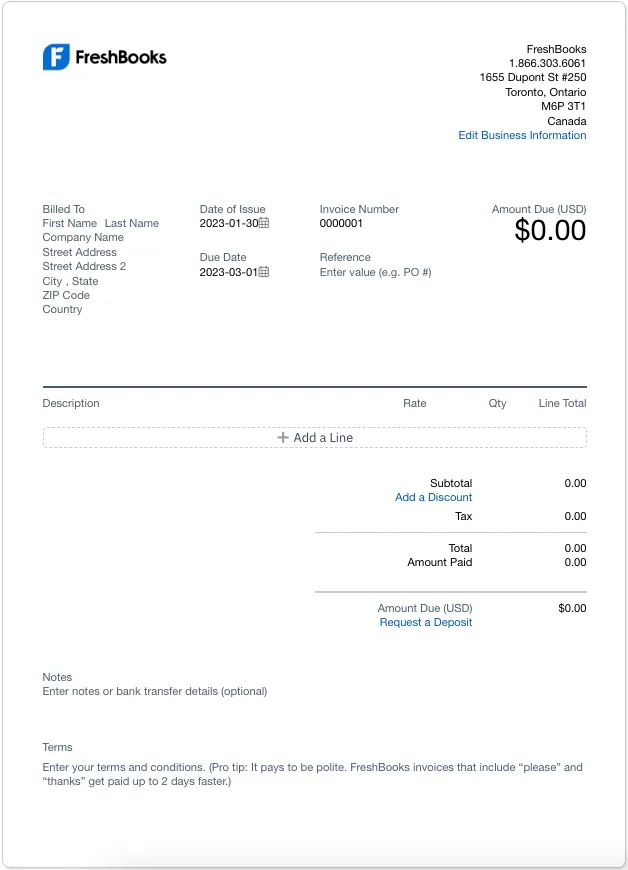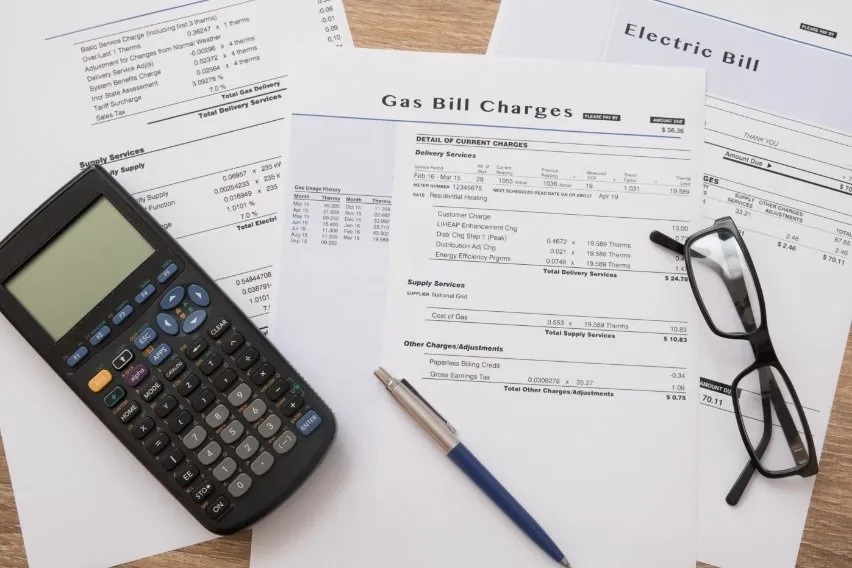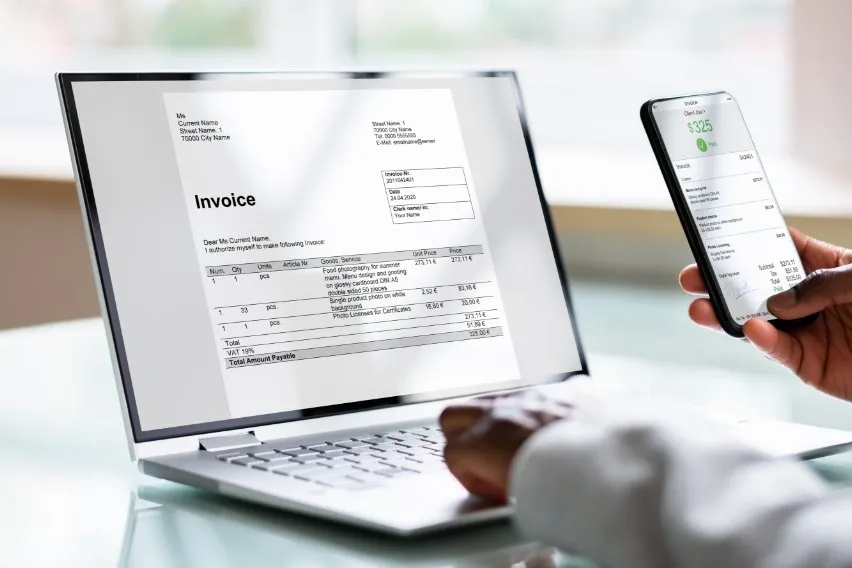Prepayment Invoice: Definition & How To Create One

Organizing your invoice process is important for your small business. It can be a challenge to stay on top of things like advance payments, purchase orders, and more than one transaction. Prepayment invoicing can make a big difference.
So how exactly does it work and can you have multiple prepayments or transactions? Keep reading to learn everything you need to know about prepayment invoices. We’ll cover what it is, how to create one, and how it should get used.
Table of Contents
How Should Prepayment Invoices Be Used?
How to Create a Prepayment Invoice
Advantages of Prepayment Invoices
What Is a Prepayment Invoice?
Prepayment is the process in which a customer makes a partial or full payment in advance for your goods or services. Prepayments assist you in avoiding significant losses. As a result, it is imperative that your company implement an advanced payment system. Without the aid of prepayment invoices, it is impossible to set up a workable prepayment framework.
You can track the customer’s advance payment made to your company using a prepayment invoice. With these prepayment invoices, a business can accurately estimate its monthly profits.
A prepayment invoice has two uses. This means that it can be sent to both your customer and your vendor. It may be used to indicate that you have sent a prepayment amount to your vendor or to ask your customers for prepayment amounts.
You also have two options for choosing the prepayment amount. It can either be a fixed percentage of the total amount or you can establish a fixed amount. You can send out more prepayment invoices if the quantity of goods or services requested is different.
The payment process can get streamlined by establishing default percentages. The prepayment invoice is sent out in advance of the final invoice. It aids in partially or fully realizing your money prior to the settlement date. So, if properly implemented, this system can significantly benefit your company.
Additionally, setting up the prepayment procedure can be easy if you use invoicing software like FreshBooks. FreshBooks makes tracking all your invoices a breeze. You can easily add all your tracked time and expenses to your invoices. This ensures that you can streamline your workflow and get paid even faster.

How Should Prepayment Invoices Be Used?
You can apply prepayment invoices for a number of things. These can include:
- Before sending the final invoice, you can set a prepayment amount on your purchase order
- Paying a vendor in advance
- Paying an employee in advance
- Tracking the prepayment amount
- And more
There are many types of goods and services that require a buyer to have to pay the full price in advance. They do this to ensure that the services will get delivered, and one of the most common examples of this is the insurance industry. A buyer pays upfront for their insurance policy with the expectation that the service will be provided in the future if needed.
How to Create a Prepayment Invoice
Use the prepayment functionality if your vendors require payment from you before they ship orders to you or if you require payment from your customers before shipping orders to them.
You can create a prepayment invoice following the creation of a sales or purchase order.
For each sale or buy line, you have the option of using the preset percentages or changing the amount as needed. You may, for instance, indicate the order’s overall total price. To create a prepayment invoice, you can start by creating an account with an automated invoicing software such as FreshBooks.
Once you have created your account, you simply need to log in and go to the invoices section. From here, you can begin by quickly creating your invoice. Be sure to include the most important information for a professional prepayment invoice. For example, you will need to include most of, if not all, of the below details:
- The invoice number
- The payment terms
- The payment options
- Any notes for the customer
- Any payment instructions
- The total quantity, amount, tax, and rate
- A breakdown of line items for all of the products or services sold

The good news is that FreshBooks makes it incredibly simple and quick to make your invoices. At the end of the day, this means that you can get paid faster. Now that you have created your prepayment invoice, you can send it to your customer or client.
If you need to create a variation of prepayment invoices, you can customize an invoice template. This way, you can build it based on specific preferences or requirements that different customers may have.
Also Read: How to Create an Invoice with Partial Payment Request
Record of Prepayment
Some businesses regularly work with the process of prepayments. Yet, the type of accounting system that you use will affect the way in which you handle payments. For example, whether you use cash accounting or accrual accounting, recording the expenses and income will differ in your financial records. Let’s take a closer look.
- Cash accounting – With this type of accounting system, businesses need to record the payment once it gets made. It doesn’t matter when the goods or services are received, an expense payment would get recorded when payment happens.
- Accrual accounting – With this type of accounting system, you record the payment when the event happens, not when you actually receive the payment. You would enter the payment for an expense as soon as the invoice gets issued.
Advantages of Prepayment Invoices
Prepayment invoices have a number of advantages for your company. It is quite helpful for building up an accrual accounting framework, keeping track of your business account, and monitoring profit margins. Let’s take a closer look at some of the biggest benefits of prepayment invoices.
- Improved inventory tracking. A prepaid invoice not only makes it easier to keep track of your spending and purchases, but it also helps you manage your inventory.
- More efficient workflow processes. Small businesses might lack the resources to fulfill large requests. Prepayments can be used to recover the costs associated with producing and delivering goods or services. Prepayments aid small businesses in setting up raw materials and starting sales orders, but you can also use prepayment invoices to track your company’s spending by including them in expense reports.
- Higher customer satisfaction. You provide your customers more reasons to buy from you by creating a strong prepayment system. Customers are not pressured to pay for their entire order at once. You give customers the choice of making numerous prepayments on a purchase order, which establishes a structure similar to an installment plan for them.

Key Takeaways
The prepayment structure provides a win-win outcome for everyone involved when properly implemented. A prepayment structure can be successfully established with the use of a prepayment invoice.
Therefore, creating expert and precise bills is an urgent necessity. Your business will benefit greatly from using an automated tool to create precise invoices, bills, receipts, sales orders, and purchase orders. If you are in the market for an automated tool to help, FreshBooks is an excellent choice.
FAQs on Prepayment Invoice
Is prepayment the same as advance payment?
Yes, a prepayment works the same way as an advance payment. For example, your small business might issue a prepayment to a vendor for the purchase of goods or services before they’re delivered.
Is a prepayment a receivable?
No, a prepayment is not a receivable. They would get considered as current assets since the amounts are paid in advance.
What is the difference between prepayment and part payment?
A prepayment is a payment in full for goods or services before they’re received. A part payment is when you make only a portion of the full payment in advance.
RELATED ARTICLES


 Paperless Invoicing: Is It Better Than Paper Invoice?
Paperless Invoicing: Is It Better Than Paper Invoice? Consolidated Invoicing: Definition & How to Create One
Consolidated Invoicing: Definition & How to Create One Usage-Based Billing: An Extensive Guide
Usage-Based Billing: An Extensive Guide Prorated Billing: What It Is and How Does It Work?
Prorated Billing: What It Is and How Does It Work? Quote vs Invoice: What’s the Difference?
Quote vs Invoice: What’s the Difference? What Is Progress Invoicing & How Does It Work?
What Is Progress Invoicing & How Does It Work?